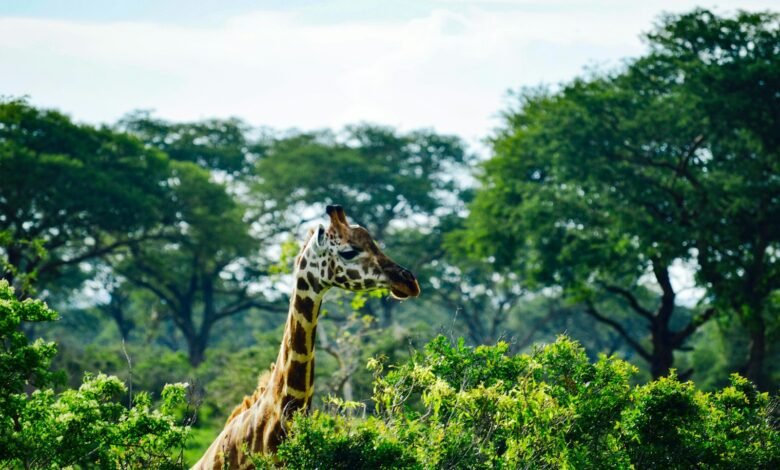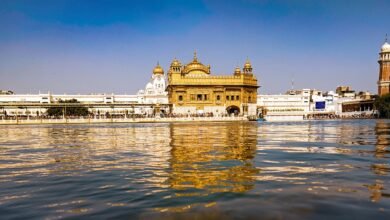Forests and Wildlife in Pakistan: A Natural Treasure Trove

Pakistan is blessed with a rich diversity of ecosystems, ranging from lush green forests to expansive deserts and towering mountains. These diverse habitats support an incredible variety of wildlife, making the country a haven for nature lovers and wildlife enthusiasts. Forests and wildlife are crucial to Pakistan’s ecological balance, providing habitats for countless species and offering vital resources for the local communities.
In this blog post, we’ll explore the key forest regions of Pakistan and the wildlife that inhabits them.
Forests in Pakistan
Pakistan’s forests cover about 5% of the country’s total land area, but they play an outsized role in maintaining biodiversity, regulating the climate, and supporting livelihoods.
1. Himalayan and Sub-Himalayan Forests
Location: Azad Jammu and Kashmir, Khyber Pakhtunkhwa, Gilgit-Baltistan
Key Features: These high-altitude forests serve as vital catchment areas for the Indus River and its tributaries, providing fresh water for millions.
Wildlife: Snow leopard, brown bear, markhor, ibex, Himalayan monal.
2. Mangrove Forests
Location: Coastal areas of Sindh and Balochistan (Indus Delta)
Key Features: Mangroves act as nurseries for marine life and protect the coastline from erosion and storms.
Wildlife: Indus river dolphin, migratory birds, mud crabs.
3. Sub-Tropical Forests
Location: Foothills of the Himalayas (Punjab, Khyber Pakhtunkhwa)
Key Features: These forests support local agriculture and are essential for controlling soil erosion.
Wildlife: Leopard, wild boar, mongoose, various reptiles and birds.
4. Dry Temperate Forests
Location: Balochistan, western Pakistan
Key Features: Balochistan’s Ziarat Juniper Forest is one of the oldest in the world and a UNESCO biosphere reserve.
Wildlife: Balochistan bear, urial, chukar partridge, snowcock.
Wildlife in Pakistan
Pakistan’s diverse habitats are home to a wide variety of animals, from the snow-clad mountains of the north to the deserts of the south. However, many of these species are endangered due to habitat loss, hunting, and climate change.
1. Big Cats
- Snow Leopard: Found in the mountainous regions of Gilgit-Baltistan, the snow leopard is an endangered predator known for its thick, grey-white fur and agility.
- Leopard: Found in northern forests and hilly areas of Khyber Pakhtunkhwa and Azad Jammu and Kashmir.
2. Bears
- Himalayan Brown Bear: Found in Deosai National Park, the brown bear is one of the largest carnivores in Pakistan.
- Balochistan Black Bear: A subspecies of the Asiatic black bear found in the dry temperate forests of Balochistan.
3. Ungulates (Hoofed Animals)
- Markhor: Pakistan’s national animal, found in the mountainous regions of Khyber Pakhtunkhwa and Gilgit-Baltistan.
- Ibex: The Siberian ibex is found in the Karakoram and Himalayan ranges, known for its long, curved horns.
- Urial: Wild sheep with large curled horns, found in Punjab and Balochistan.
4. Birds
- Houbara Bustard: A critically endangered migratory bird found in the Cholistan and Thar deserts.
- Peregrine Falcon: A fast bird of prey found across Pakistan.
- Chukar Partridge: Pakistan’s national bird, commonly found in hilly regions.
5. Marine Life
- Indus River Dolphin: An endangered aquatic mammal found in the Indus River.
- Green and Olive Ridley Turtles: These sea turtles nest along the coastlines of Sindh and Balochistan.
Conservation Efforts
Pakistan’s rich biodiversity is under threat from deforestation, hunting, habitat destruction, and climate change. Several national parks, wildlife reserves, and conservation projects have been established to protect endangered species and their habitats.
- Deosai National Park: Protects the Himalayan brown bear and its habitat.
- Chitral Gol National Park: Famous for conserving the markhor and snow leopard.
- Hingol National Park: The largest national park in Pakistan, home to species like the Sindh ibex and houbara bustard.
Conclusion
Pakistan’s forests and wildlife are an essential part of its natural heritage, offering stunning landscapes and a rich diversity of animal life. From the snow-capped peaks of the Karakoram to the coastal mangroves of Sindh, the country is a treasure trove for nature enthusiasts. However, conservation efforts are critical to preserving these ecosystems and protecting the endangered species that call Pakistan home.



